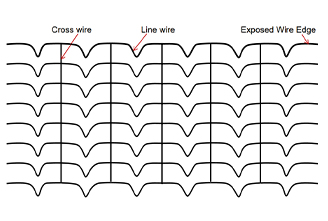- Industrial zone, South of Anping Town, Hengshui, Hebei, China.
- sales@hfpetromesh.com
- +86-18931809706
 Afrikaans
Afrikaans  Albanian
Albanian  Amharic
Amharic  Arabic
Arabic  Armenian
Armenian  Azerbaijani
Azerbaijani  Basque
Basque  Belarusian
Belarusian  Bengali
Bengali  Bosnian
Bosnian  Bulgarian
Bulgarian  Catalan
Catalan  Cebuano
Cebuano  Corsican
Corsican  Croatian
Croatian  Czech
Czech  Danish
Danish  Dutch
Dutch  English
English  Esperanto
Esperanto  Estonian
Estonian  Finnish
Finnish  French
French  Frisian
Frisian  Galician
Galician  Georgian
Georgian  German
German  Greek
Greek  Gujarati
Gujarati  Haitian Creole
Haitian Creole  hausa
hausa  hawaiian
hawaiian  Hebrew
Hebrew  Hindi
Hindi  Miao
Miao  Hungarian
Hungarian  Icelandic
Icelandic  igbo
igbo  Indonesian
Indonesian  irish
irish  Italian
Italian  Japanese
Japanese  Javanese
Javanese  Kannada
Kannada  kazakh
kazakh  Khmer
Khmer  Rwandese
Rwandese  Korean
Korean  Kurdish
Kurdish  Kyrgyz
Kyrgyz  Lao
Lao  Latin
Latin  Latvian
Latvian  Lithuanian
Lithuanian  Luxembourgish
Luxembourgish  Macedonian
Macedonian  Malgashi
Malgashi  Malay
Malay  Malayalam
Malayalam  Maltese
Maltese  Maori
Maori  Marathi
Marathi  Mongolian
Mongolian  Myanmar
Myanmar  Nepali
Nepali  Norwegian
Norwegian  Norwegian
Norwegian  Occitan
Occitan  Pashto
Pashto  Persian
Persian  Polish
Polish  Portuguese
Portuguese  Punjabi
Punjabi  Romanian
Romanian  Russian
Russian  Samoan
Samoan  Scottish Gaelic
Scottish Gaelic  Serbian
Serbian  Sesotho
Sesotho  Shona
Shona  Sindhi
Sindhi  Sinhala
Sinhala  Slovak
Slovak  Slovenian
Slovenian  Somali
Somali  Spanish
Spanish  Sundanese
Sundanese  Swahili
Swahili  Swedish
Swedish  Tagalog
Tagalog  Tajik
Tajik  Tamil
Tamil  Tatar
Tatar  Telugu
Telugu  Thai
Thai  Turkish
Turkish  Turkmen
Turkmen  Ukrainian
Ukrainian  Urdu
Urdu  Uighur
Uighur  Uzbek
Uzbek  Vietnamese
Vietnamese  Welsh
Welsh  Bantu
Bantu  Yiddish
Yiddish  Yoruba
Yoruba  Zulu
Zulu
- Afrikaans
- Albanian
- Amharic
- Arabic
- Armenian
- Azerbaijani
- Basque
- Belarusian
- Bengali
- Bosnian
- Bulgarian
- Catalan
- Cebuano
- Corsican
- Croatian
- Czech
- Danish
- Dutch
- English
- Esperanto
- Estonian
- Finnish
- French
- Frisian
- Galician
- Georgian
- German
- Greek
- Gujarati
- Haitian Creole
- hausa
- hawaiian
- Hebrew
- Hindi
- Miao
- Hungarian
- Icelandic
- igbo
- Indonesian
- irish
- Italian
- Japanese
- Javanese
- Kannada
- kazakh
- Khmer
- Rwandese
- Korean
- Kurdish
- Kyrgyz
- Lao
- Latin
- Latvian
- Lithuanian
- Luxembourgish
- Macedonian
- Malgashi
- Malay
- Malayalam
- Maltese
- Maori
- Marathi
- Mongolian
- Myanmar
- Nepali
- Norwegian
- Norwegian
- Occitan
- Pashto
- Persian
- Polish
- Portuguese
- Punjabi
- Romanian
- Russian
- Samoan
- Scottish Gaelic
- Serbian
- Sesotho
- Shona
- Sindhi
- Sinhala
- Slovak
- Slovenian
- Somali
- Spanish
- Sundanese
- Swahili
- Swedish
- Tagalog
- Tajik
- Tamil
- Tatar
- Telugu
- Thai
- Turkish
- Turkmen
- Ukrainian
- Urdu
- Uighur
- Uzbek
- Vietnamese
- Welsh
- Bantu
- Yiddish
- Yoruba
- Zulu
serrated grating sizes
Understanding Serrated Grating Sizes A Comprehensive Overview
Serrated gratings, often used in various engineering and architectural applications, are designed with a series of notches or serrations along their surface. These unique features allow for improved functionality, particularly in terms of slip resistance and visual appeal. As industries shift towards safety and aesthetics, the importance of understanding serrated grating sizes becomes crucial.
First and foremost, the dimensions of serrated gratings are vital in determining their effectiveness. The size of the serrations, typically measured in millimeters or inches, directly impacts the grip surface. Smaller serrations may be ideal for less demanding environments, where minimal slip resistance is needed. In contrast, larger serrations are better suited for high-traffic areas or environments with increased risk of slips and falls. Various specifications help determine the appropriate sizing for specific applications, from stair treads to walkways.
Moreover, material selection plays a significant role in the performance of serrated gratings. Common materials include steel, aluminum, and fiberglass. Each material can be manufactured with different serration sizes, affecting their overall weight, durability, and maintenance requirements. For instance, steel gratings with larger serrations provide excellent traction and are often used in construction sites or outdoor areas exposed to the elements. On the other hand, fiberglass options may offer lightweight alternatives while still maintaining adequate traction.
serrated grating sizes

Another critical consideration when discussing serrated grating sizes is load-bearing capacity. The spacing between the serrations and their height will influence how much weight the grating can support without bending or breaking. Industries such as transportation, manufacturing, and construction need to carefully calculate the required load capacity based on the intended application. Thus, selecting the correct serrated grating size is fundamental to ensuring safety and durability.
In addition to functionality, aesthetics should not be overlooked. Serrated gratings can be customized in various sizes and finishes to match architectural designs. This flexibility allows for practical applications in commercial settings while enhancing visual appeal. Designers often incorporate these elements into their projects to achieve both safety and style.
Finally, manufacturers provide guidelines and standardized sizes for serrated gratings, simplifying the selection process. Understanding the specifications and application requirements enables engineers and architects to make informed choices about the appropriate grating size for their projects.
In summary, the significance of serrated grating sizes lies in their ability to provide safety, durability, and aesthetic appeal. As industries evolve, the need for versatile and effective grating solutions will continue to grow, emphasizing the importance of understanding the relevant sizing specifications. By considering dimensions, materials, load capacity, and design, professionals can ensure the successful integration of serrated gratings into their projects.
-
Welded Steel Bar Grating: The Rugged Industrial Flooring Solution Built for Load and LongevityNewsJun.24,2025
-
Steel Walkway Grating: Reliable, Resilient, and Built for Every StepNewsJun.24,2025
-
Shale Shaker Screen for Sale: Optimize Drilling Efficiency with Precision Screening PowerNewsJun.24,2025
-
Shaker Screen for Sale: Elevate Your Drilling Efficiency with Durable Separation SolutionsNewsJun.24,2025
-
Press Locked Steel Grating: Industrial Strength with Precision Fit for Heavy-Duty ApplicationsNewsJun.24,2025
-
Perimeter Safety Netting: The Critical Safety Upgrade for Every HelipadNewsJun.24,2025